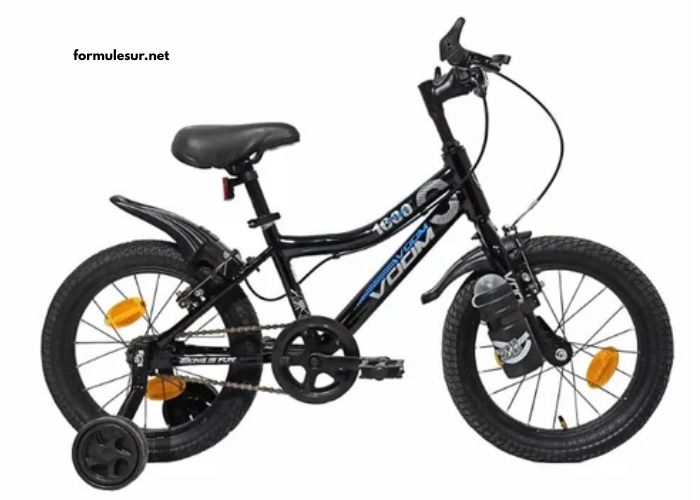As the world of business continues to evolve, small entrepreneurs must adapt to the changing market dynamics to stay competitive. A strong business model is the foundation of any successful enterprise, especially for small businesses that are just starting or those looking to scale. Small entrepreneurs face unique challenges, including limited resources, budget constraints, and fierce competition. However, with the right approach, these challenges can be transformed into opportunities for growth. This article will explore various effective business models that small entrepreneurs can adopt to build sustainable and profitable ventures.
Importance of Choosing the Right Business Model
A business model defines how a company creates, delivers, and captures value. For small entrepreneurs, selecting the right model is crucial because it shapes every aspect of the business, from operations and marketing to revenue generation and customer relationships. The right business model can help small businesses streamline their processes, minimize risks, and create a competitive edge. On the other hand, a poorly chosen business model can lead to inefficiencies, financial losses, and ultimately, business failure.
Key Factors to Consider When Choosing a Business Model
Before diving into the different types of business models, it is important for small entrepreneurs to consider the following factors:
-
Market Demand: Is there a demand for your product or service? Entrepreneurs should ensure their business model addresses a genuine need in the market.
-
Target Audience: Who are you serving? Understanding your audience helps you tailor your business model to meet their needs and preferences.
-
Resources and Budget: Small businesses often have limited resources, so selecting a model that minimizes costs while maximizing value is essential.
-
Scalability: A good business model should allow for growth. It should be flexible enough to expand as your business gains momentum.
-
Competitive Advantage: How does your model differentiate you from competitors? Finding a unique selling proposition (USP) can help you carve out a niche in the market.
With these factors in mind, let’s explore some effective business models for small entrepreneurs.
1. Subscription-Based Business Model
The subscription-based business model has gained immense popularity, particularly in the digital space. It involves offering products or services on a recurring basis, typically for a monthly or annual fee. This model provides a predictable and steady revenue stream, which is essential for small entrepreneurs looking for financial stability.
Benefits of the Subscription Model
-
Predictable Revenue: Subscription businesses enjoy recurring payments, which help maintain cash flow and reduce financial uncertainty.
-
Customer Retention: By offering ongoing value, businesses can build long-term relationships with customers, leading to higher retention rates.
-
Scalability: As the customer base grows, so does revenue. Subscription models can be easily scaled without significant increases in operational costs.
Examples of Subscription-Based Business Models
-
Software as a Service (SaaS): Companies like Adobe and Netflix utilize this model, providing software or media content to customers on a subscription basis.
-
Product Subscriptions: Box subscriptions for beauty products (e.g., Birchbox) or food delivery services (e.g., Blue Apron) are also popular examples.
2. E-Commerce and Dropshipping
The e-commerce business model has exploded in popularity due to the rise of online shopping. Dropshipping, a form of e-commerce, has particularly attracted small entrepreneurs because of its low overhead costs and minimal inventory management.
How Dropshipping Works
In a dropshipping business model, the entrepreneur partners with suppliers to sell products without holding any inventory. When a customer makes a purchase, the supplier ships the product directly to the customer. This eliminates the need for warehousing and shipping management.
Benefits of E-Commerce and Dropshipping
-
Low Start-Up Costs: Since there’s no need to buy inventory upfront, dropshipping is a cost-effective way to start an e-commerce business.
-
Wide Product Selection: Entrepreneurs can offer a wide variety of products without the risk of unsold inventory.
-
Global Reach: E-commerce businesses can tap into global markets, expanding their customer base far beyond their local area.
Examples of E-Commerce and Dropshipping Models
-
Online Retail Stores: Websites like Amazon and eBay are prime examples of e-commerce platforms where entrepreneurs can sell products either directly or through dropshipping.
-
Niche Stores: Small entrepreneurs can also create niche e-commerce stores (e.g., eco-friendly products, pet supplies) to target specific customer segments.
3. Freemium Business Model
The freemium model is popular in the tech and digital industries, especially for software companies. It involves offering a basic version of a product or service for free while charging for premium features or advanced versions.
How the Freemium Model Works
Small entrepreneurs can use the freemium model to attract a large user base by offering a free product or service. Once customers are engaged and find value in the offering, they are more likely to upgrade to a paid version to access additional features or benefits.
Benefits of the Freemium Model
-
Low Barrier to Entry: Offering free access encourages users to try the product without financial risk.
-
Large User Base: The free version can quickly gain traction, creating a large pool of potential customers for the paid version.
-
Revenue from Premium Upgrades: The freemium model allows businesses to monetize a small percentage of users who convert to paying customers.
Examples of the Freemium Model
-
Spotify: Offers free access to music with ads, while premium users pay for an ad-free experience and additional features.
-
LinkedIn: Provides a free version with basic features and a paid version with advanced networking tools and business analytics.
4. Franchise Model
The franchise model is an effective business strategy for small entrepreneurs who want to expand quickly while minimizing the risks associated with starting a brand-new business. A franchise allows an entrepreneur to operate a business using an established brand, business model, and support system.
How the Franchise Model Works
In a franchise arrangement, the franchisor (the brand owner) grants the franchisee (the entrepreneur) the right to operate a business under its name. The franchisee benefits from the established brand reputation and business processes, while the franchisor receives a fee or a percentage of revenue.
Benefits of the Franchise Model
-
Established Brand: Entrepreneurs can leverage the reputation and recognition of a well-known brand, reducing the risk of failure.
-
Ongoing Support: Franchisors provide training, marketing support, and operational guidance to ensure franchisees succeed.
-
Scalability: Once a franchise is successful, it can be expanded into multiple locations with relative ease.
Examples of Franchise Businesses
-
McDonald’s: One of the most successful franchise models, offering entrepreneurs the opportunity to run fast-food restaurants under the McDonald’s brand.
-
Subway: Another popular franchise offering opportunities to operate sandwich shops under an established brand name.
5. Service-Based Business Model
For small entrepreneurs who possess expertise in a specific field, a service-based business model can be a great option. This model involves offering professional services, such as consulting, coaching, marketing, or design, to businesses or individuals.
How the Service-Based Business Model Works
Entrepreneurs in service-based industries typically charge clients on an hourly, project, or retainer basis. This model relies heavily on the skills and expertise of the entrepreneur to deliver high-quality services that meet client needs.
Benefits of the Service-Based Business Model
-
Low Overhead: Service-based businesses often require minimal capital investment, as the main asset is the entrepreneur’s knowledge and expertise.
-
Flexibility: Entrepreneurs can set their own hours, determine their rates, and decide the scope of services they offer.
-
Strong Client Relationships: Service-based businesses often rely on long-term client relationships, providing opportunities for repeat business and referrals.
Examples of Service-Based Business Models
-
Consulting: Entrepreneurs who have expertise in marketing, finance, or business strategy can offer consulting services to other companies.
-
Freelancing: Writers, designers, and developers can offer freelance services on platforms like Upwork or Fiverr.
6. Social Enterprise Model
Social enterprises aim to solve social, environmental, or community issues while also generating profit. This model is suitable for small entrepreneurs who want to make a positive impact while running a profitable business.
How the Social Enterprise Model Works
Entrepreneurs operating social enterprises focus on creating value for society, whether by addressing poverty, education, or sustainability. They often reinvest a portion of their profits into their social mission or cause.
Benefits of the Social Enterprise Model
-
Positive Social Impact: Entrepreneurs can contribute to solving pressing global challenges, which can be highly rewarding both personally and professionally.
-
Attracting Like-Minded Consumers: Many consumers are now more conscious of the companies they support, favoring businesses that contribute to positive social change.
-
Access to Grants and Funding: Social enterprises often have access to government grants, funding programs, and tax incentives.
Examples of Social Enterprises
-
TOMS Shoes: For every pair of shoes sold, TOMS donates a pair to a child in need, combining profit with a social mission.
-
Patagonia: Known for its commitment to environmental sustainability, Patagonia donates a portion of profits to environmental causes.
Conclusion
Small entrepreneurs have a variety of business models to choose from, each with its unique benefits and challenges. The right model depends on factors like market demand, available resources, and long-term goals. Whether you choose a subscription model, dropshipping, or a service-based approach, the key is to focus on delivering value, building strong relationships with customers, and continuously adapting to changing market conditions. By selecting the right business model, small entrepreneurs can create a solid foundation for growth, profitability, and success.





